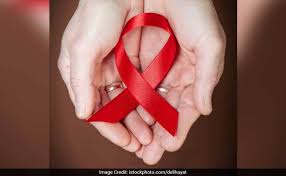Source :- metro.co.uk
HIV – the Aids causing virus – has been wiped out for the first time in living animals, with researchers saying a cure for humans is on the horizon. A clinical trial could start within a year, scientists predict. Current HIV treatment focuses on the use of antiretroviral therapy (ART) that suppresses HIV replication but does not eliminate the virus from the body. It requires life-long use and if the therapy is stopped, HIV could rebound and cause the development of Aids. But scientists at Temple University in Philadelphia carried out gene testing that saw mice infected with HIV have it completely eliminated from their DNA. Senior investigator Professor Kamel Khalili said: ‘Our study shows treatment to suppress HIV replication and gene editing therapy, when given sequentially, can eliminate HIV from cells and organs of infected animals.’ Dr Kamel Khalili led the team who discovered the gene editing tool (Picture: SWNS) His team used a technique called CRISPR-Cas9 that can snip faulty DNA infected with the harmless virus. It has been likened to a pair of ‘molecular scissors’. It combines this with a recently developed therapeutic strategy known as long-acting slow-effective release (LASER) ART. Currently, the HIV virus is able to rebound because it integrates its DNA sequence into the genomes of cells in an infected person’s immune system and lies beyond the reach of antiretroviral drugs. But in the new study, published in Nature Communications, the modified drug was packaged into nanocrystals which can reach tissues where HIV is likely to be lying dormant. From there, the nanocrystals – stored within cells for weeks – slowly release the drug to wipe out HIV. Dr Khalili said: ‘We wanted to see whether LASER ART could suppress HIV replication long enough for CRISPR-Cas9 to completely rid cells of viral DNA.’ Researchers infected mice engineered to produce human cells susceptible to HIV and then treated the animals with LASER ART and CRISPR-Cas9. Analysis of the mice at the end of their treatment revealed the HIV DNA had been completely eliminated in one-third of the infected mice. Dr Khalili said: ‘The big message of this work is that it takes both CRISPR-Cas9 and virus suppression through a method such as LASER ART, administered together, to produce a cure for HIV infection. ‘We now have a clear path to move ahead to trials in non-human primates and possibly clinical trials in human patients within the year.’ Current medication suppresses the HIV virus but does not eliminate it and relies on long-term use (Picture: Getty) Earlier this year, health secretary Matt Hancock promised there would be no new cases of HIV in England by 2030. Donald Trump has made a similar pledge for the US. Co senior investigator Dr Howard Gendelman, of Nebraska University, who developed LASER ART, said: ‘This achievement could not have been possible without an extraordinary team effort that included virologists, immunologists, molecular biologists, pharmacologists, and pharmaceutical experts. ‘Only by pooling our resources together were we able to make this groundbreaking discovery.’
